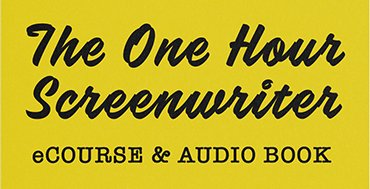Subtotal $350.00
Isolation


Mental health professionals agree: isolation is bad for your emotional well-being. But dramatic isolation is very good for your screenplays. Pick a movie, any movie – old or new, comedy or drama. Its structure is almost certainly comprised of a process of dramatic isolation.
Dramatic isolation can be expressed in many forms. Physical isolation can be central to a movie’s design, as in the recent Oscar contenders “The Revenant” and “The Martian.” Often more than one sort of isolation is at work in a movie, although the different forms are often interwoven in the service of theme.
For example, when Sandra Bullock finds herself alone in “Gravity,” her sudden physical isolation takes on special poignancy when we learn that she has also isolated herself emotionally when her daughter died some years previously. Thus her superhuman efforts to return to Earth reflect her drive to recommit to a fuller, healed Self.
Similarly, James Franco’s character in the true story “127 Hours” spends his time trapped alone in a crevice ruminating on the cost of the emotional and spiritual isolation in which he has lived his life. The poignant coda of “127” hours reveals how Franco’s real-life counterpart, Aron Ralston, did choose to pursue a more emotionally-fulfilled life.
Perhaps the most fundamental use of isolation is simply to scare the hell out of audiences. “The Shining,” “Alien,” “The Evil Dead,” “Cabin In the Woods,” “Paranormal Activity,” “The Babadook,” “The Witch,” – and pretty much every slasher movie ever made – all rely on the isolation of their victims to create suspense, dread and, ultimately, terror.
Isolation as a structural tool is not unique to movies.
The works of William Shakespeare abound with its use. As Romeo and Juliet fall more deeply in love, we can only appreciate the life-and-death stakes as, one-by-one, they lose their relationships with their friends and families. MacBeth, Lear, Hamlet, Richard III – each of these legendary characters, in their own ways, finds themselves increasingly alone before meeting their fates.
Even movies crowded with characters can create – are required to create – an atmosphere of emotional isolation to successfully convey their stories. The journalists of “Spotlight” have no intimate experience of sexual abuse by Catholic clergy, but even so their relentless pursuit of the story threatens them with increasingly painful consequences that are expressed by isolation. Thus the relationship between Rachel McAdams’ character and her grandmother comes under intense pressure. Michael Keaton’s character risks the loss of lifelong friends in the Boston establishment.
Many of cinema’s greatest masterpieces don’t merely hinge on this dynamic process of isolation – they are “about” isolation. This subtext has a profound influence on how the story is told – on what scenes are about, even the structural purpose of secondary characters.
Why is Kay in “The Godfather,” if not to mark for us Michael Corleone’s slide into spiritual isolation and emotional oblivion? Indeed, when the 3-film saga of “The Godfather” is viewed as a single narrative, we can trace isolation as its most central theme.
In Part One, Michael becomes the Don – literally shutting the door on his wife Kay, who represents a life away from the Corleones. In Part Two, Michael’s determination to protect his family leads him – ironically – to destroy it. In Part Three, Michael’s purpose is to repair his fractured relationship with Kay and their children once and for all – thus ending the isolation he chose in Part One. This simply-articulated goal of Michael’s becomes the seed from which all subsequent creative decisions grow.
This design is not limited to dramas. “Bridesmaids” certainly made lavish use of its R-rating. But all the fun was rooted in a very simple, well-designed structure that saw Annie (Kristen Wiig) lose her job, her apartment, her good-guy boyfriend, and – most crucially for this story – her best friend.
And the list goes on. Jailed for murder, Gustav H. loses his privileged life at “The Grand Budapest Hotel” and must fight to regain it (and his innocence). The hapless actors of “Tropic Thunder” find themselves in a very real jungle fighting a very real war. “Inside Out” kicks into high gear when its hero, Riley, runs away from home – beginning a process that threatens her memories and her emotions.
The uses of isolation as a dramatic strategy, as a construct, are limited only to the writer’s imagination. But its purpose is always the same – to create (or aggravate) stress and therefore ratchet up tension – and hence increase engagement – for the writer’s desired audience.
MICHAEL COLLEARY is a screenwriter and producer. His produced credits include “Lara Croft: Tomb Raider” and “Face/Off,” which the New York Times named as among “the 1000 Best Movies Ever Made.” He received his MFA in screenwriting from the prestigious UCLA film school, where he is now a frequent lecturer and instructor. In addition to teaching UCLA’s famed “434” screenplay workshop, Michael also consults with aspiring writers for the acclaimed CineStory Foundation, and has mentored veterans via the Writers Guild Foundation.
“Isolation” appears here as a preview chapter of Michael’s up-coming book, “Screenplay DNA.” You can find Michael at MichaelColleary.com, follow him on Twitter, Facebook and/or opt-in to his Hollywood Insider newsletter.


Write your screenplay in one hour a day. Laurie breaks down the screenwriting process into clear daily steps. Based on Laurie’s acclaimed UCLA Masters in Screenwriting course.
VIEW IN SHOP


Create a visual map for a character’s emotional journey. Pull stories from character rather from rote story structure beats. Some of the largest international media companies, use this in story and character development.


A clear concise guide for writers and producers to have by their side as they embark on a project. It gives a really vital reminder of what is key for story success.


No comment yet, add your voice below!